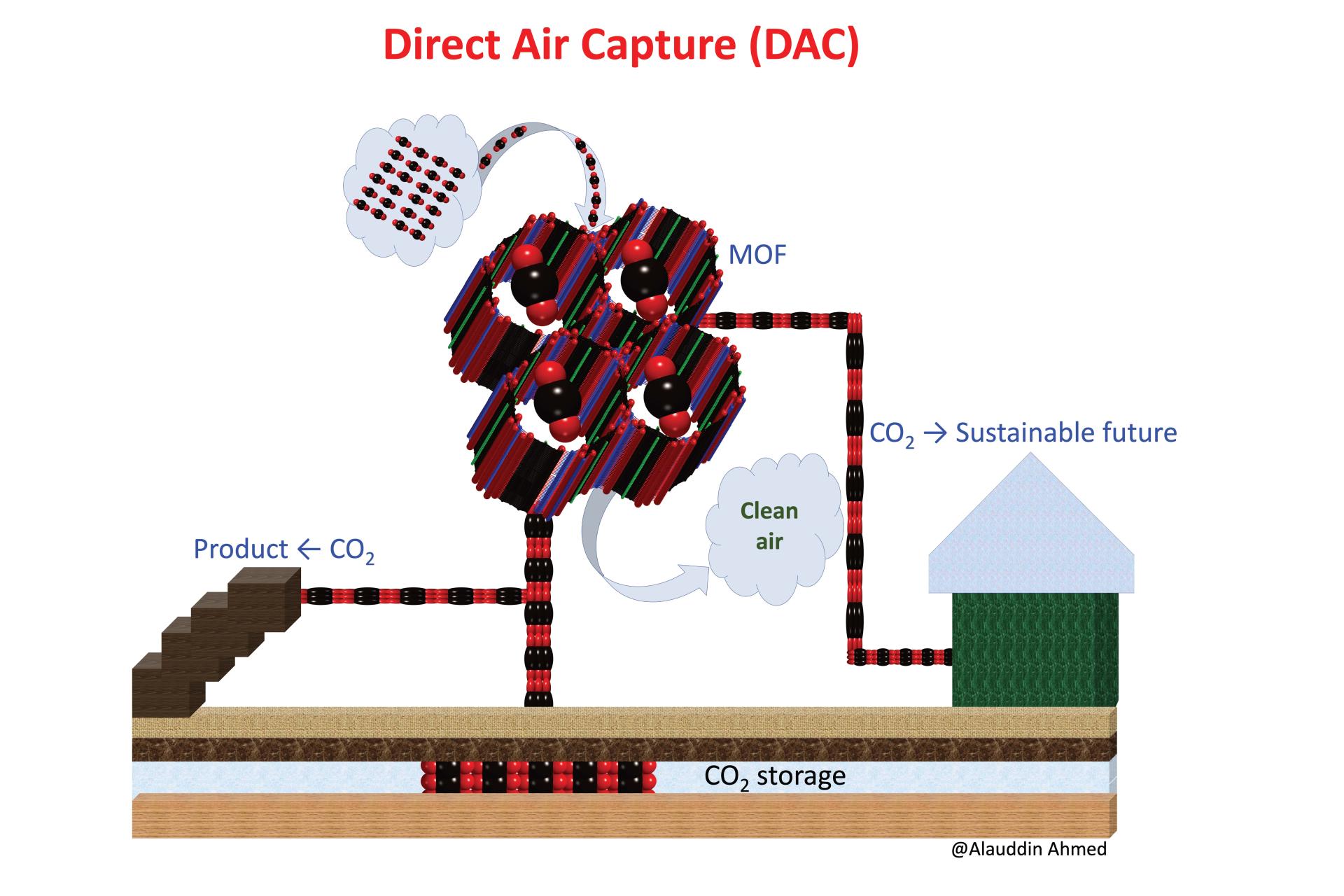Metal-Organic Frameworks for DAC Under Humid Conditions
Metal-Organic Frameworks for DAC Under Humid Conditions
Metal-Organic Frameworks for DAC Under Humid Conditions
Program: Carbon Neutrality Acceleration Program
Program details » | All Carbon Neutrality Acceleration Program projects »

A non-trivial pursuit: Finding materials suitable and affordable for direct air capture
Principal investigator: Alauddin Ahmed, Mechanical Engineering
Project Summary
Direct air capture (DAC)— pulling CO2 out of the air—will likely play a critical role in balancing carbon emissions that cannot be eliminated. And in the pursuit of economically viable DAC pathways, metal-organic frameworks (MOFs) — a class of CO2-inhaling crystalline “sponges” — just might come out ahead. Recently, these nanoporous adsorbents have emerged as potential winners because of their exceptional CO2 capturability and low regeneration energy.
In contrast, state-of-the-art solvent-based systems can capture CO2 effectively, but the process of regeneration—making the host materials reusable for another cycle—is energy-intensive and thus cost-prohibitive and less beneficial. While the regeneration temperature of a typical solvent-based direct air capture (DAC) system is ~900°C, MOF-based technology can regenerate at temperatures between 80°C and 120°C—a tremendous decrease in energy requirements and cost.
However, in typical atmospheric conditions, MOFs can prefer to bind with water over CO2, reducing their suitability for DAC. Discovering the right MOF for the task involves balancing the trade-offs between preferential adsorption of CO2 and water. The research team likens this exercise to finding a needle in a haystack, as there are millions of MOF candidates that may or may not work.
Using a multi-stage computational approach and leveraging their database of nearly a million MOFs, the team aims to produce the world’s first list of “hero MOFs” for DAC under humid conditions. The team will also develop machine learning models for quickly screening thousands of MOFs for this purpose. The outputs developed in this work will allow researchers worldwide to discover and design MOFs for DAC at an unprecedented speed.
The work will position the team for follow-on research collaborations with other U-M experts and MOF-based industrial partners. In addition, the project outputs are expected to accelerate the direct air capture initiatives of the Biden administration under the Bipartisan Infrastructure Law.
This team received a $50,000 CNAP faculty research grant in 2022.